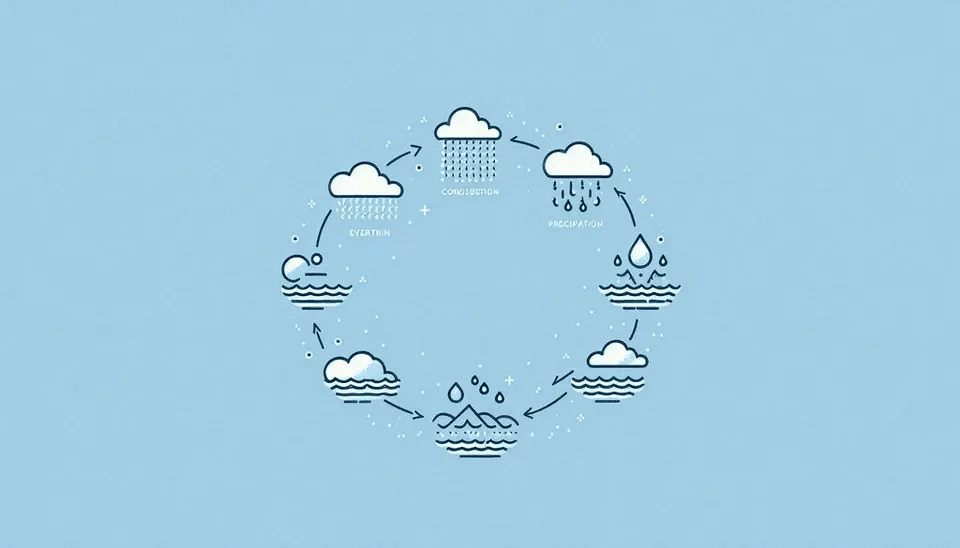
Water, the lifeblood of the earth, is flowing constantly in different forms through the hydrological cycle for the preservation of all living things. Despite this key role, The CDC reported in 2022 that 2 billion people lack access to safely managed drinking water at home! According to the Conservation laws, the amount of water in the earth never increases or decreases and only changes from one state to another during the processes in the hydrological cycle. However, why are we facing a water shortage crisis in many parts of the world today? To answer this question, it is necessary first to know the volume of salt and freshwater resources in the world and how they are distributed, and then to learn about the concept of water balance in a watershed.
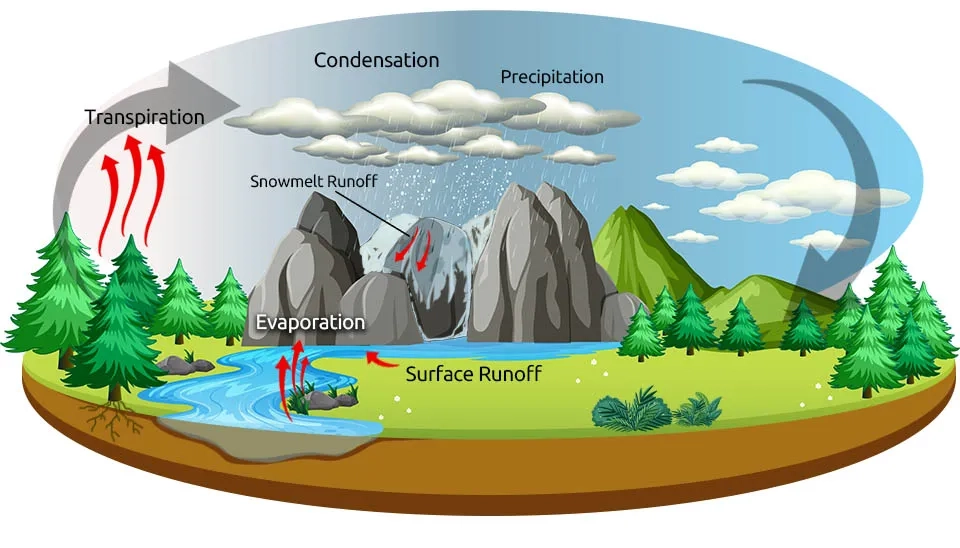
Although water is always present in nature, its uneven distribution has made it a challenge to obtain it at the required time and place. To better understand the water resources in the world, you should know that 1,350,400 (103 km3) of water circulating in the hydrological cycle are stored in the oceans and 26000 (103 km3) are made up of glaciers and polar ice. Among them, the share of underground water is 7000 (103 km3), and the lakes and inland seas are only 230 (103 km3), all of which are necessary for the survival of humans and other creatures. These statistics show that more than 99% of the water on the planet cannot be used directly and need to go through various processes to become fresh water that can be used for various purposes such as drinking, agriculture, and industry. The amount of renewable water available worldwide is only 29.7 km3 (Jayawardena, 2022).
Therefore, by understanding the hydrological cycle and how water circulates, it is possible to use and exploit the available water sustainably. Also, the use of smart water management systems can guarantee the optimal use of water and contribute to the environment and human society.
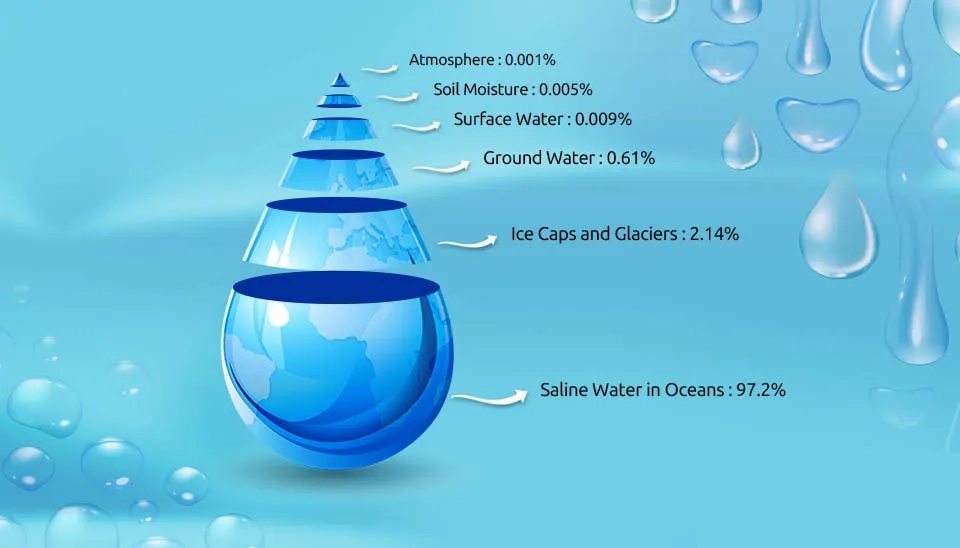
The Hydrologic Cycle
The water cycle, also known as the hydrologic cycle refers to the pathway of water in nature, as it moves in its different phases through the atmosphere down over the land, to the ocean, and back up to the atmosphere. Then atmospheric water vapor condenses and precipitates over land, initially, it moistens the surface and some amount of it is stored as interception which later evaporates. As precipitation (and in a similar way to snowmelt) continues, part of it may flow over the surface in the form of overland flow or surface runoff, and part of it may enter into the soil as infiltration. Surface runoff typically collects in local depressions such as puddles, small ponds, gullies, and larger channels. From there, it continues its flow as streamflow, eventually reaching larger bodies of water like lakes or the ocean.
The infiltrated water may flow rapidly through the near-surface soil layers to exit into Springs or adjacent streams, or it may percolate more slowly to the profile to join the groundwater which sooner or later seeps out into the natural river system, lakes, and other open-water bodies; part of the infiltrated water is retained in this soil profile by capillary and other factors where it is available for uptake by the roots of vegetation.
Soil layers and other geologic formations that can transmit water through their pores and interstices are called aquifers. Streamflow is fed both by surface runoff and by subsurface flow from riparian (i.e. located along the banks) aquifers. The streamflow that originates from the outflow of groundwater is commonly known as base flow. It is termed as such when there is no storm flow or storm runoff caused by precipitation. Base flow is also referred to as drought flow or fair-weather flow. Finally, the hydrologic cycle is closed by evaporation, which returns the water, while in transit in the different flow paths and stages of storage along the way, back into the atmosphere. When evaporation takes place through the stomata of vegetation, it can be referred to as transpiration (Brutsaert, 2023).
Under field conditions, it is not possible to separate evaporation from transpiration. Indeed, we are generally concerned with the total water loss, or evapotranspiration, from a basin. The specific mechanisms causing the loss, whether it is due to free-water evaporation, plant transpiration, or soil moisture evaporation, are of relatively minor significance in our overall understanding (Fetter and Kreamer, 2022).
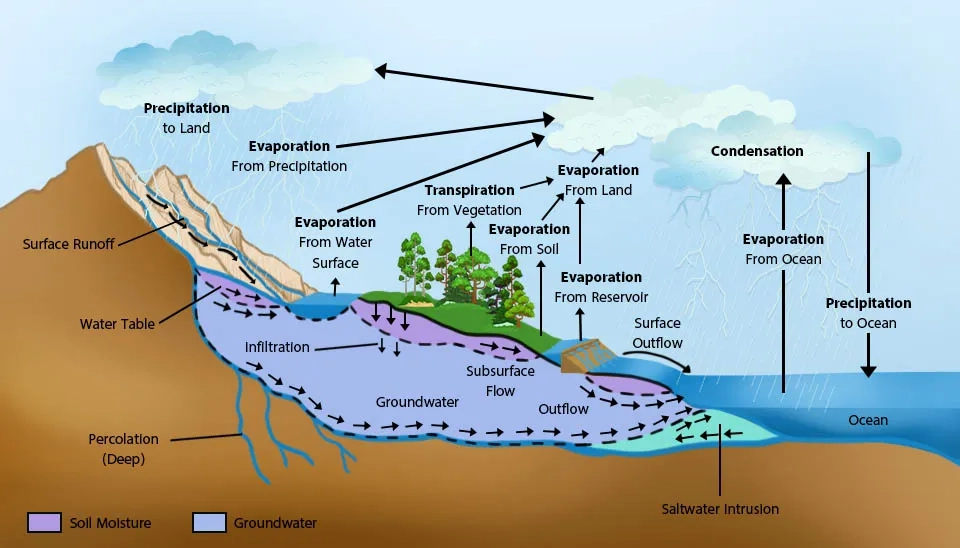
So it can be concluded that the hydrologic cycle is a constant process by which water moves through the atmosphere, the oceans, and the land, forming a continuous cycle essential to maintaining life on Earth. The main elements of the hydrologic cycle are evapotranspiration, condensation, precipitation, infiltration, and runoff. By understanding these essential elements, we can have a better understanding of the cycle and how it works to maintain the water balance on Earth.
Water Balance
Although the amount of water in the world does not decrease or increase, the volume of water in a watershed can be changed. Because catchment areas, despite being surrounded by ridges, are not isolated. The volume of water resources in a watershed can be changed under the processes of the hydrological cycle. This means that even though the values of global annual evaporation and precipitation are equal, the values of these two parameters are not necessarily the same at the watershed level, and the excess of one of them compared to the other can lead to a negative or positive balance. Water balance studies enable us to quantify threats to water resources and develop strategies for better utilization and management; therefore, it is important to accurately predict the components of the water balance and detect changes in it(Xu et al. 1998). The water balance provides a quantitative representation of the hydrological cycle. The general water balance equation is:
P stands for Precipitation, R, and G indicate the runoff and groundwater height or volume, ET means Evapotranspiration and DS shows the changes in storage in a watershed.
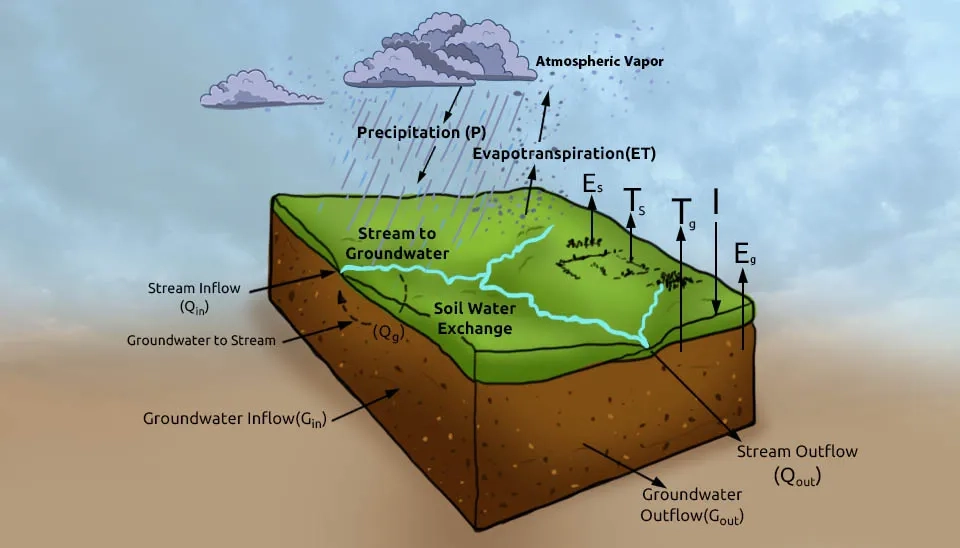
Climate Change Impacts on the Hydrologic Cycle
Climate change impacts can alter different elements of the water cycle. Increasing evaporation (Dingle et al., 2022), changing precipitation patterns (Asif et al., 2023), melting glaciers and ice caps (Pant et al., 2023), altering and shifting snowfall patterns, changes in the surface runoff in Streams and Lakes, and increasing water vapor in the atmosphere (Ahmed et al., 2023) are the most crucial ones that can lead to more frequent happening of extreme events like floods and droughts.
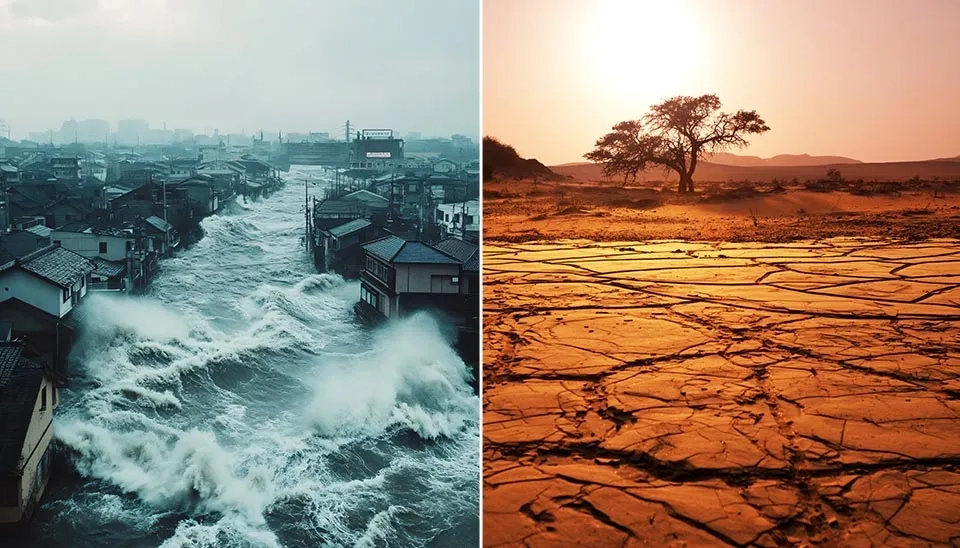
Also, the mentioned cases can cause the sea level to rise, which will endanger coastal areas and increase the vulnerability of coastal aquifers (Roy et al., 2023). Overall, climate change disrupts the delicate balance of the water cycle, affecting water availability, quality, and distribution. These changes have significant implications for agriculture, human health, ecosystems, and economies worldwide.
Anthropological Impacts on the Hydrologic Cycle
It is necessary to know how humans can affect the Hydrologic Cycle. Human activities can directly or indirectly (human-induced climate change) have impacts on the elements that form the Hydrologic cycle. According to the report published by the IPCC in 2021, Anthropogenic activities in the last two centuries have resulted in rapid climate changes that have been unprecedented in the last two millennia. Additionally, the current warming rate is greater than the previous warming reconstructed in the last 100,000 years (Masson-Delmotte et al., 2021).
Human operations to achieve food and water security and economic growth such as Dam Construction (Zhang and Shang, 2023), Deforestation (Smith et al., 2023), Vegetation Restoration (Li et al., 2023), Groundwater overexploitation (Nakayama et al., 2023), Intensive Agricultural Irrigation (Wang et al., 2022) and Urbanization (Zhao et al., 2023) have led to Reducing the groundwater levels and the natural flow of rivers and influenced the hydrological cycle in local, regional and even global scales. Hence, Human activities should be carried out towards the goals of sustainable development and the least changes in the hydrological regime of a region.
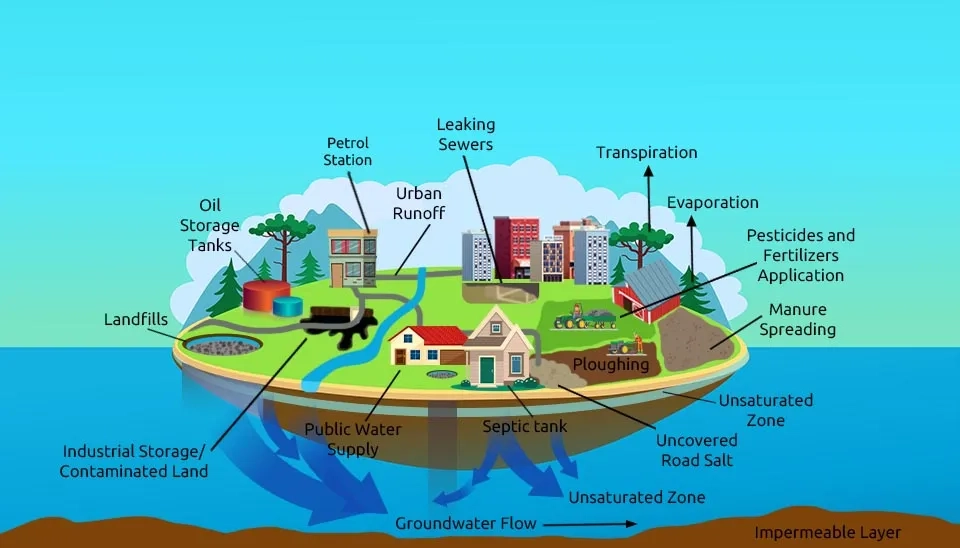
Conclusion
In conclusion, the hydrological cycle, its components, and processes have a decisive role in the existence and access to water resources, and with their detailed study, comprehensive planning in the field of water resources supply and management can be achieved. It should be kept in mind that human activities and climate changes can have wide-ranging effects on the hydrological cycle, and the investigation and study of these effects play a key role in ensuring water security around the world.